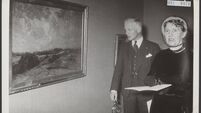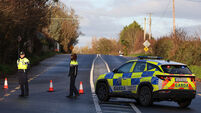Petrol cloud may have a silver lining
Having to fork out more cash on the forecourt could tempt hard-pressed motorists to forsake the car and revert to shank’s mare.
The situation is also a godsend for health promotion agencies who have been crying in the wilderness for years with their calls for policies to limit car usage and encourage walking and cycling, which now have a new resonance. Such policies need huge input from planners and designers who, up to now, have largely focused on facilitating motorised traffic.
More people are coming to realise that our towns and cities are not pedestrian or cyclist-friendly. Even on rural roads, walking and cycling can be dangerous.
The continuing rise in the use of private cars for most journeys, including short distances, highlights the need to strengthen policies which promote ‘active travel’, according to research by the Institute of Public Health in Ireland (IPH).
Active travel is explained as the use of physical activity, including walking or cycling, instead of driving, to make routine journeys such as going to work, the shop or visiting friends.
An IPH report, Active Travel — Healthy Lives, shows that in the Republic half of all car owners in the greater Dublin area drive for trips of less than one mile. In Northern Ireland, car travel accounts for 50% of all journeys less than two miles and almost two- thirds of journeys less than five miles. In 2006, 63% of all journeys in the Republic were made by car and 70% of all journeys in Northern Ireland were made by private car in 2007-2009.
IPH public health development officer and report author Teresa Lavin believes that putting greater priority on active travel in urban planning and policies would encourage more people to walk.
As the level of active travel increases, road traffic injuries and deaths decrease, she adds. For example, in Germany and the Netherlands where there are high rates of active travel, pedestrian fatalities are ten times lower than in the United States, which has high car usage.
The report also highlights evidence of the environmental, economic and social benefits of active travel, which would reduce greenhouse gas emissions and result in better air quality and less noise.
Active modes of travel would also reap substantial economic benefits. Research from Scotland has suggested that if 40% of those making car journeys switched to bicycle this would result in a saving of £2 billion per year due to reduced road deaths.
The research shows that increased walking and cycling also promotes sociability as people would have opportunities to meet and chat on the road, while also helping to prevent anti-social behaviour due to more people being on foot or bicycle in an area.
For all that to come about, however, a strong planning and policy response is necessary, Ms Lavin emphasises. To make active travel a viable, safe and attractive alternative to car use, changes in transport planning policies are necessary. Continued investment in a cycling and walking-friendly infrastructure is essential.
“The overall aim of policy and intervention to increase active travel should be making the healthy choice the easy choice,” she says.
The following are examples of the types of interventions which could be implemented: restricting car usage in city centres, more public transport, bicycle and walking infrastructure, on-street bicycle loan programmes, safe bicycle parking at train stations and workplaces, awareness-raising campaigns and programmes in workplaces and schools.
Also involved in this area is the WalkingMatters group which says our communities are often not designed in a way that encourages us to integrate walking into our lives. The group engages with communities to improve the quality of walking in their areas so that people can choose active, or low-carbon, travel more often.
WalkingMatters is also an advocate of practical changes that can be made to create streets and public spaces that people can enjoy. It’s obvious that if public spaces are poorly maintained and unsafe, they won’t be used.
“We work with teenagers or residents’ associations to look at public spaces before they are developed or redesigned to ensure that the end-users are getting something they will use,” says Patricia Gardiner, of WalkingMatters.
“If the route from home to school is along heavily trafficked streets, children won’t walk. If shops and services are all too far from home, there’s no choice but to drive. Our streets are the public spaces in which we live and need to be designed as places in themselves.”
In summary, she says should not allow cars to dominate, but should prioritise children, carers, pedestrians, people with disabilities and cyclists.















